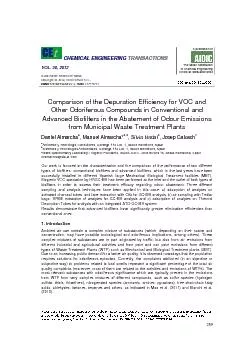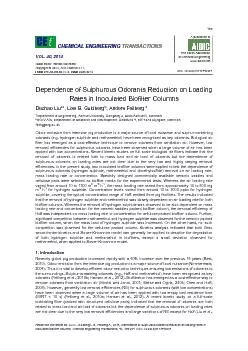PDF-CCHHEEMMIICCAALL EENNGGIINNEEEERRIINNGG
Author : karlyn-bohler | Published Date : 2015-09-14
259 TTRRAANNSSAACCTTIIOONNSS VOL 30 2012 A publication of The Italian Association of Chemical Engineering Online at wwwaidicitcet Guest EditorRenato Del Rosso Copyright
Presentation Embed Code
Download Presentation
Download Presentation The PPT/PDF document "CCHHEEMMIICCAALL EENNGGIINNEEEERRIINNGG" is the property of its rightful owner. Permission is granted to download and print the materials on this website for personal, non-commercial use only, and to display it on your personal computer provided you do not modify the materials and that you retain all copyright notices contained in the materials. By downloading content from our website, you accept the terms of this agreement.
CCHHEEMMIICCAALL EENNGGIINNEEEERRIINNGG: Transcript
Download Rules Of Document
"CCHHEEMMIICCAALL EENNGGIINNEEEERRIINNGG"The content belongs to its owner. You may download and print it for personal use, without modification, and keep all copyright notices. By downloading, you agree to these terms.
Related Documents


